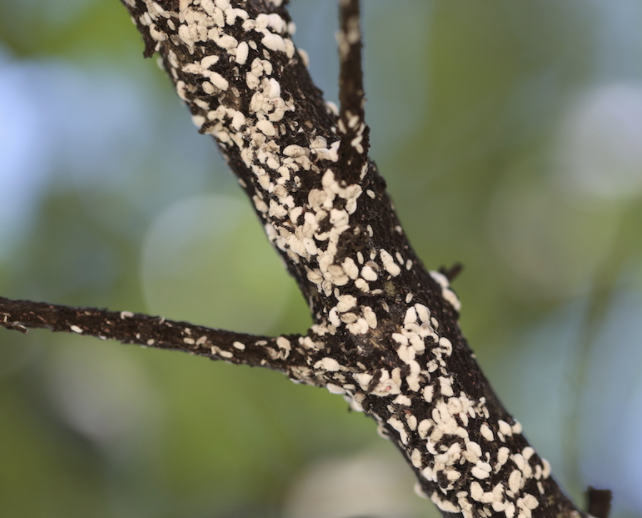Crape Myrtle Bark Scale
go.ncsu.edu/readext?692248
en Español / em Português
El inglés es el idioma de control de esta página. En la medida en que haya algún conflicto entre la traducción al inglés y la traducción, el inglés prevalece.
Al hacer clic en el enlace de traducción se activa un servicio de traducción gratuito para convertir la página al español. Al igual que con cualquier traducción por Internet, la conversión no es sensible al contexto y puede que no traduzca el texto en su significado original. NC State Extension no garantiza la exactitud del texto traducido. Por favor, tenga en cuenta que algunas aplicaciones y/o servicios pueden no funcionar como se espera cuando se traducen.
Português
Inglês é o idioma de controle desta página. Na medida que haja algum conflito entre o texto original em Inglês e a tradução, o Inglês prevalece.
Ao clicar no link de tradução, um serviço gratuito de tradução será ativado para converter a página para o Português. Como em qualquer tradução pela internet, a conversão não é sensivel ao contexto e pode não ocorrer a tradução para o significado orginal. O serviço de Extensão da Carolina do Norte (NC State Extension) não garante a exatidão do texto traduzido. Por favor, observe que algumas funções ou serviços podem não funcionar como esperado após a tradução.
English
English is the controlling language of this page. To the extent there is any conflict between the English text and the translation, English controls.
Clicking on the translation link activates a free translation service to convert the page to Spanish. As with any Internet translation, the conversion is not context-sensitive and may not translate the text to its original meaning. NC State Extension does not guarantee the accuracy of the translated text. Please note that some applications and/or services may not function as expected when translated.
Collapse ▲Many landscape trees and shrubs have been over-planted because they are maintenance-free, because they are a fast-growing screen, or because they give us beautiful flowers or breath-taking fall color. Too much of a good thing can lead to problems down the road. That has happened with the crape myrtle. Crape myrtle bark scale has made its way to North Carolina and we have a concentration in the Charlotte region putting all crape myrtles at risk.
Crape myrtle bark scale is a felt scale. The female scales produce fluffy white filaments that cover their body. These filaments protect them from contact insecticides. In spring the females produce eggs beneath their body then die. Tiny crawlers hatch from the eggs, then crawl around on the stems until they find a place to settle and feed. As soon as they settle they begin producing the white filaments to cover their bodies.
There are at least 2 overlapping generations each year. All stages are present now on landscape trees according to Stacey Jones, Area Specialized Agent, Commercial Nursery, and Greenhouse, in Cabarrus County. This means that all stages should be on any crape myrtles that may be infested in Union County as well.
Populations of crape myrtle bark scale usually get established in rough areas around branch collars, so look for them in this area of the plant. As the population increases all the bark on the trunk and stems may be covered. These scales are most often noticed because trees become covered in black sooty mold. If you notice unusually heavy honeydew and sooty mold on crape myrtles take a closer look at the bark. Since crape myrtles flower continually and attract a wide range of pollinators you need to be selective and cautious when choosing an insecticide to control the crape myrtle bark scale. Horticultural oil applied when the plants are dormant would be a low toxic option.





